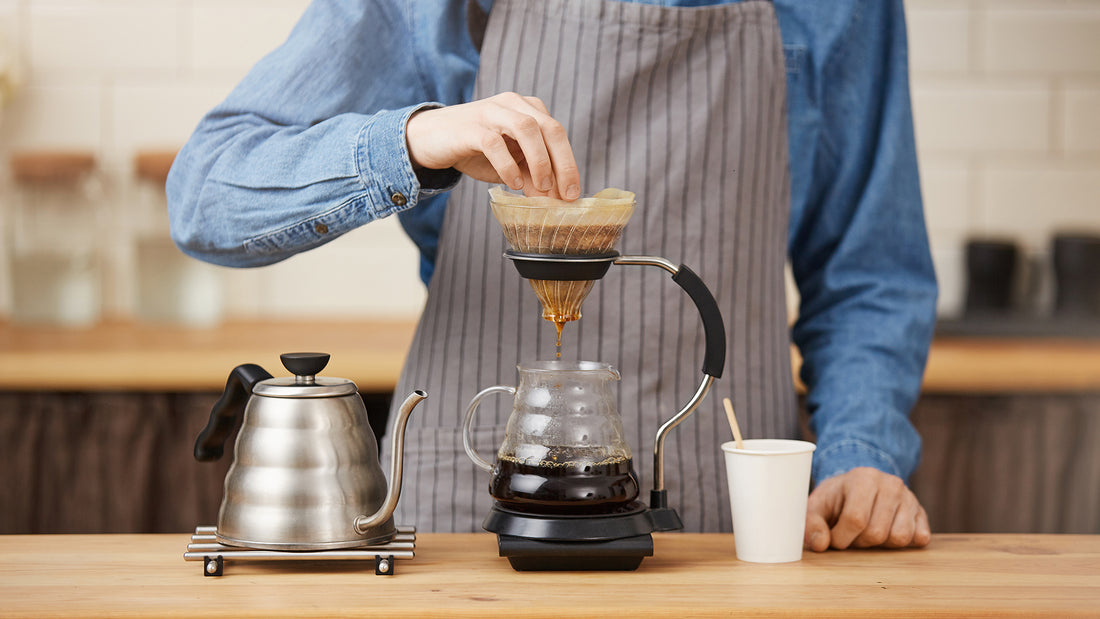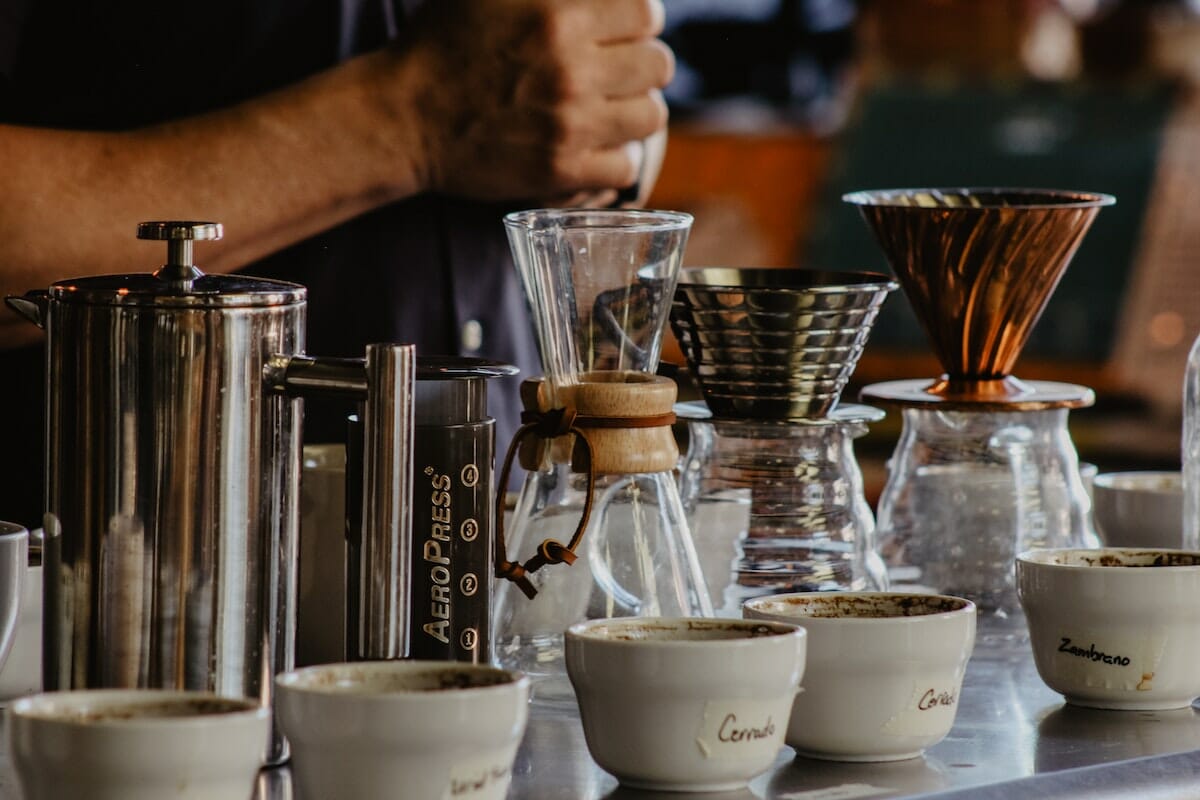Coffee Brewing Methods Debunked: From French Press to Cold Brew
Coffee Brewing Methods Debunked: From French Press to Cold Brew
Blog Article
Understanding Different Coffee Developing Approaches for a Richer Taste Experience
A detailed understanding of various coffee brewing methods can profoundly affect your flavor experience, revealing the complex subtleties of this precious beverage. As you take into consideration which approach best matches your taste choices, the inquiry stays: exactly how do these methods influence the final cup, and which might boost your coffee experience to brand-new heights?
Drip Coffee Maker
While lots of coffee lovers value the nuances of various brewing techniques, the drip coffee manufacturer remains a staple in families and workplaces as a result of its simpleness and performance. This device runs by heating water and allowing it to move through coffee premises, extracting oils and tastes, which then leak into a carafe listed below.
The drip coffee maker is favored for its ability to make several cups at as soon as, making it optimal for hectic mornings or celebrations. Customers can easily personalize the toughness of their coffee by changing the amount of coffee premises made use of or picking a brew strength establishing located in lots of modern devices. Additionally, programmable attributes enable users to set a timer, making sure a fresh pot of coffee prepares upon waking.
Maintenance is fairly uncomplicated, as the majority of drip coffee makers require routine cleansing to eliminate mineral buildup. Lots of versions are also equipped with functions such as vehicle shut-off, which boosts safety and security and energy efficiency. Eventually, the drip coffee machine provides a trustworthy and easy to use option for those looking for a regular and pleasurable coffee experience without the intricacies of more sophisticated developing methods.

French Press
The French press supplies a distinct developing experience that contrasts greatly with the automated procedure of a drip coffee machine. This manual approach enables for an intimate communication with the coffee-making procedure, giving customers greater control over various criteria, such as soaking time, coffee-to-water ratio, and grind size.
To brew coffee using a French press, coarsely ground coffee beans are steeped in warm water for roughly four minutes. This immersion method extracts abundant oils and tastes from the coffee, causing a full-bodied beverage that highlights the nuances of the beans used. The steel or nylon mesh filter of the French press allows vital oils to continue to be in the brew, adding to its robust flavor account.
When using a French press, it is important to take note of the developing time and water temperature, as these elements substantially affect the final taste. Experimentation with different coffee selections and soaking periods can bring about a tailored flavor experience. Overall, the French press is a accessible and rewarding method for coffee enthusiasts looking for to strengthen their admiration for the complexities of their favorite drink.
Pour-Over Techniques
Pour-over techniques boost the coffee brewing experience by permitting specific control over every facet of the procedure, from water temperature level to putting strategy. This method involves manually putting hot water over coffee grounds in a filter, usually positioned in a dripper, which permits for ideal removal of flavors.
To start, selecting the ideal coffee grind is important; a tool to medium-fine work works best to ensure correct water circulation and removal (coffee brewing methods). Next, water temperature level must preferably range in between 195 ° F and 205 ° F, as this range extracts the ideal flavors without heating the coffee
The putting technique also plays an important duty. A slow-moving, round activity see it here when saturating the premises can help equally remove oils and flavors. It's often recommended to permit the coffee to flower for 30 secs after the initial pour, which allows co2 retreat and enhances taste advancement.
Coffee Equipments
For those looking for a various yet similarly fulfilling brewing experience, coffee equipments provide an one-of-a-kind approach of coffee prep work that highlights review stress extraction. This procedure includes requiring warm water via finely-ground coffee at around 9 bars of stress, resulting in a focused shot of coffee that showcases rich flavors and aromas.

The quality of coffee is influenced by a number of variables, consisting of work size, dosage, water temperature, and removal time. Accomplishing the excellent espresso shot calls for method and interest to detail. Furthermore, the coffee functions as a base for various coffee beverages, such as cappucinos, coffees, and Americanos, making it a versatile choice for coffee fanatics.

Cold Mixture Techniques
Cold mixture coffee has acquired appeal for its smooth, low-acidity account and refreshing preference, making it an optimal choice for cozy weather or those conscious standard brewing methods - coffee brewing methods. The procedure of chilly developing generally involves soaking coarsely ground coffee beans in cold or space temperature useful link level water for a prolonged duration, usually 12 to 24 hours. This approach removes tastes in different ways than warm water, leading to an abundant, intricate brew that highlights chocolatey and fruity notes
There are various chilly brew approaches available, including immersion and drip brewing. The immersion method is the most straightforward; just combine coffee and water in a container, let it high, and after that strain the premises. On the other hand, the drip approach uses a specialized coffee machine to slowly leak water with coffee grounds, enabling a much more controlled extraction procedure.
No matter the technique chosen, the coffee-to-water proportion is important, usually advised at 1:4 for a concentrated brew that can be watered down with water or milk prior to serving (coffee brewing methods). Cold brew can be served over ice, blended with flavorful syrups, or used as a base for numerous coffee beverages, providing adaptability and an unique taste experience
Verdict
In final thought, discovering various coffee brewing methods substantially enriches the flavor experience. Involving with these diverse developing refines not only improves admiration for coffee's intricacy yet additionally encourages people to tailor their coffee satisfaction according to personal preferences.
Individuals can quickly customize the toughness of their coffee by adjusting the amount of coffee grounds used or selecting a brew stamina setting discovered in numerous modern makers. Inevitably, the drip coffee manufacturer offers a dependable and straightforward alternative for those seeking a consistent and pleasurable coffee experience without the intricacies of even more elaborate brewing techniques.
To brew coffee utilizing a French press, coarsely ground coffee beans are steeped in warm water for around four minutes. Alternatively, the drip method uses a specific coffee manufacturer to slowly leak water through coffee grounds, permitting for a much more regulated extraction procedure.
Involving with these diverse brewing refines not just improves admiration for coffee's intricacy yet likewise empowers people to tailor their coffee satisfaction according to individual choices.
Report this page